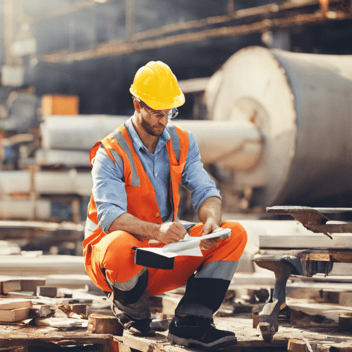Discover essential safety tips to protect construction workers from potential hazards and accidents on the job site.
Understanding the Importance of Safety in the Construction Industry
Safety is of utmost importance in the construction industry as workers are exposed to various hazards and potential accidents on a daily basis. It is crucial for construction workers to understand the importance of following safety protocols and guidelines to ensure their well-being and prevent injuries or even fatalities.
By prioritizing safety, construction workers can create a safer working environment, reduce the risk of accidents, and improve overall productivity. Safety should be ingrained in the culture of every construction site, with everyone involved actively participating in maintaining a safe work environment.
Wearing the Right Personal Protective Equipment (PPE)
One of the most important safety measures for construction workers is wearing the appropriate Personal Protective Equipment (PPE). PPE includes items such as hard hats, safety glasses, high-visibility vests, gloves, and safety boots. Each piece of PPE serves a specific purpose in protecting workers from potential hazards.
Construction workers should always wear their PPE correctly and ensure it is in good condition. Regular inspections and maintenance of PPE are necessary to guarantee their effectiveness. By wearing the right PPE, workers can reduce the risk of head injuries, eye injuries, falls, and other accidents.
Proper Handling and Use of Tools and Equipment
Construction workers deal with a wide range of tools and equipment in their daily tasks. It is crucial to handle and use these tools properly to prevent accidents and injuries. Workers should receive proper training on the correct handling and use of tools and equipment, including power tools, heavy machinery, and scaffolding.
Workers should always inspect their tools and equipment before use to ensure they are in good working condition. They should also follow the manufacturer's instructions and safety guidelines. Regular maintenance and repairs should be conducted to keep tools and equipment in optimal condition.
Implementing Effective Communication and Signage
Effective communication and signage play a vital role in ensuring safety on construction sites. Clear and concise communication between workers, supervisors, and other stakeholders is essential to prevent misunderstandings and potential accidents.
Construction sites should have proper signage to indicate potential hazards, restricted areas, emergency exits, and safety protocols. Signage should be easily visible and understandable to all workers. Regular safety meetings and toolbox talks can also help improve communication and promote a safety-conscious culture.
Maintaining a Clean and Organized Work Area
A clean and organized work area is not only essential for productivity but also for safety. Construction workers should maintain a tidy work environment by properly storing tools and equipment, disposing of waste materials, and keeping walkways clear.
Regular cleaning and housekeeping practices should be implemented to prevent slips, trips, and falls. By keeping the work area clean and organized, workers can minimize the risk of accidents and ensure a safer working environment for everyone.

%20(1).webp?width=425&length=350&name=Untitled%20design%20(6)%20(1).webp)

.webp?width=352&name=Blog%20Graphic%20(10).webp)


Leave a Comment